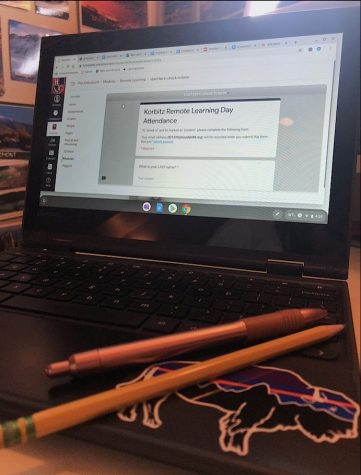Is e-learning an effective substitute for a traditional classroom?
District 86 has remote learning planned for Tuesday through Friday during the weeks of March 16 and March 23.
Ohio public schools were the first to shut down until April, and Illinois followed suit not long after. Colleges across the country have also closed their doors, some indefinitely and some have already made the decision to reopen for the fall semester.
All of the school closures beg the question: how will students continue to learn outside of the classroom?
The answer lies in Remote Learning or e-learning.
E-learning is defined as “learning utilizing electronic technologies to access educational curriculum outside of a traditional classroom.” This can simply entail assignments posted to Canvas or another site, or a live video chat with a teacher in which students can interact in real-time.
At Central, assignments were uploaded and attendance was taken on a Google form during the practice e-learning day last April, but the exact nature of e-learning for the next two weeks remains to be seen. This time around, students will be required to sign onto each class at a specific time instead of before 1 p.m., and the classes are structured in a block schedule instead of each class every day.

Illinois governor J.B. Pritzker made the decision to shut down schools on March 13 in response to the COVID-19 pandemic.
E-learning has grown in popularity in the past few years, with different AP or college courses offered online, and Central’s transition to flex-learning days and e-learning snow days in the past year. With this rise of impersonal learning, many educators have discussed the merits of e-learning, and its level of effectiveness.
E-learning can be an effective alternative to a classroom if done correctly. Although it lacks human interaction that is a viable component of learning, it allows students the flexibility to work at their pace according to their schedule, increases retention rates, and is more time-efficient than traditional classroom learning.
Being on a tight, stringent schedule can be stress-inducing. I have struggled to finish my work in a 50-minute class period before, and I’ve seen the panicked looks of students glancing around the room and assessing whether they are behind their classmates.
With e-learning, students can work at their own pace and not worry about comparing themselves to others. It has been proven that students can retain more information from e-learning classes than traditional ones because they are able to move through the information at a pace tailored to their own needs.

Students are required to check-in at the beginning of each class using a Google form in order to be marked as present.
“I like being in control of when I do things and I like how I can do my work at my own pace,” said Jenni Liu, junior. “I can go over things that I know quickly and spend more time on confusing concepts.”
E-learning requires students to log onto their classes at specific times, which could be considered an inhibitor to flexibility, but I personally prefer this setup. This brings a certain order to my day that I appreciate, and gives me a specific time frame to interact with my teachers. Plus, we have a one-hour break in between classes, which makes the day a bit more relaxed.
E-learning doesn’t require a student to sit in a classroom for seven hours a day, and for that reason student retention rates have increased by 25 to 60 percent. Students can focus easier in their homes for a shorter period of time.
At Central, there is one problem that could in fact inhibit retention rates: the lack of a grade attached to e-learning assignments. Many e-learning assignments are similar to normal homework given out on a traditional school day, homework that would otherwise earn a grade. Erasing points from assignments eliminates student motivation to complete the work to the best of their ability, and thus makes them less interested in what they are learning.
Similarly, e-learning requires less of a time investment, because it is easier to be efficient at home than in a classroom. The time required to learn a lesson has been reduced 25 to 60 percent with eLearning.
It can be argued that e-learning doesn’t have the same benefits as sitting in a classroom, and this is true. Being able to interact with other students and teachers is a viable part of education, and helps us grow both as students and as people.
E-learning isn’t the same as face-to-face instruction, but it serves as a valid substitute. It allows students and teachers to continue on with lessons and units when a normal school day isn’t possible.
E-learning will continue for the weeks of March 16 and March 24, and District 86 will tentatively resume school on April 6.

Sophie, a senior, is a second year member of the Devil's Advocate team. At Central, she is a mentor for Business Professionals of America,...













